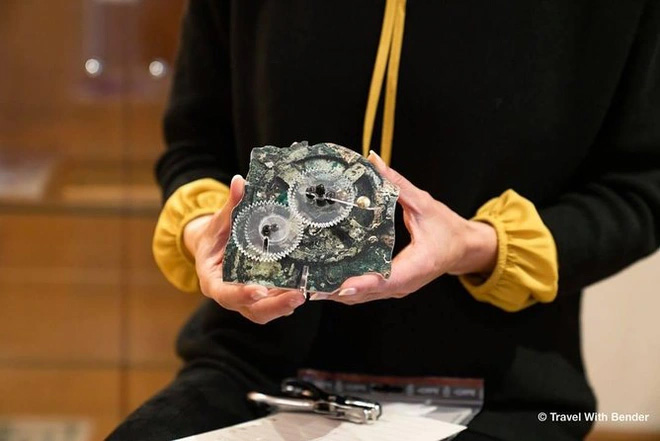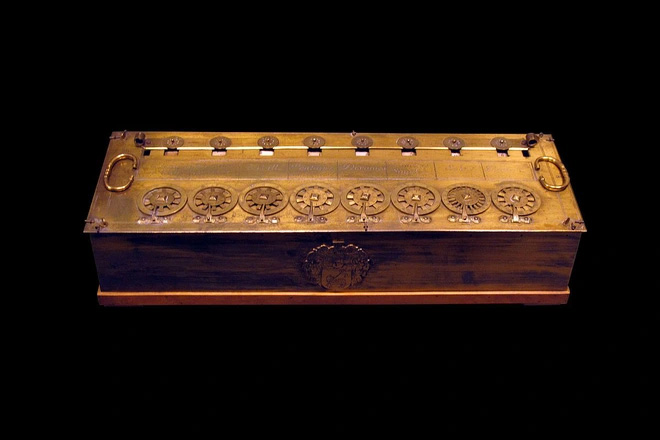When it comes to computers, most people think of screens, network connections, and various software applications. However, the three ancient computing machines below truly deserve the title of the greatest and most mysterious machines in human history.
1. Stonehenge: Calculating the Summer Solstice
In the Salisbury Plain in southern England lies a collection of about 100 gigantic stones, often referred to as the most mysterious mechanical computer in human history: the ancient site of Stonehenge.

Stonehenge – a megalithic monument from the Neolithic period. (Photo: Wikipedia/Telegraph).
Stonehenge is a Neolithic and Bronze Age monument consisting of earthworks surrounding a circular stone arrangement, making it one of the most famous prehistoric sites on the planet. Archaeologists believe that the stone pillars were erected around 2500-2000 BC. This area and its surroundings were designated a UNESCO World Heritage Site in 1986.
According to archaeologists, it took at least 1,500 years to complete Stonehenge, constructed in phases over several millennia. In the medieval period, some believed that Stonehenge was the work of Merlin’s magic, while modern archaeologists argue that its construction involved the mysterious rituals of the Celts, even though it predates the Celts’ arrival in England by at least 1,000 years.
On the summer solstice in the Northern Hemisphere, during dawn, the sun rises behind a large stone known as the Heel Stone, located just outside of Stonehenge, casting its first rays directly into the center of the monument, marking the longest day of the year. Similarly, during the winter solstice (the shortest day of the year), one can observe a similar scene at sunset. While it is impossible not to view Stonehenge as a computer, at a basic level, it resembles a computer in a narrow sense by modern standards.
The ancients dedicated thousands of years to constructing a computing machine made of dozens of gigantic stones weighing 40 tons each, sourced from as far as 320 kilometers away. Today, it remains an accurate machine for calculating the summer solstice each year. Thus, future generations owe a debt of gratitude to the prehistoric peoples of Britain who created this monument, which remains one of the ancient structures still shrouded in mystery.
2. Antikythera: Predicting the Position of Astronomical Events and Eclipses

The Antikythera Mechanism. (Photo: Viator/Archyde).
Humans have been fascinated by astrology since ancient times, as evidenced by the creation of the Antikythera Mechanism, capable of charting the celestial bodies and the positions of all humanity. Additionally, it can map the movements of the moon, planets, and stars in the night sky along with complex zodiac signs. Its influence extends to everything from government management to religious activities and space observation.
The Antikythera Mechanism is gear-shaped with a diameter of about 140 mm. This is an analog computer and a mechanical model of the solar system invented by the ancient Greeks for predicting astronomical events and eclipses for calendrical and astrological purposes. It could also be used to calculate the timing of the ancient Olympic Games held every four years.
Discovered in 1901 in a shipwreck off the coast of the Greek island of Antikythera, it is over 2,000 years old. Greek scientists have determined that this device was made as early as 205 BC and as late as 87 BC, being commonly used when the ship carrying it sank around 70 to 60 BC.
The Antikythera was housed in a wooden box measuring 340x180x90 mm, initially found as a single block, later divided into three main pieces, and now consists of 82 separate fragments. Four of these fragments contain gears, and inscriptions have been found on many components. The largest gear has a diameter of about 40 mm with 223 teeth.
According to research by experts Mike Edmunds and Tony Freeth at Cardiff University (UK), the Antikythera is essentially a complex clockwork mechanism consisting of at least 30 bronze gears arranged in a grid. Modern X-ray tomography and high-resolution surface scanning have revealed the faintest engravings on the outer casing. The details indicate that the Antikythera has 37 gears, allowing it to track the movements of the moon and sun through the zodiac, predicting eclipses and modeling the moon’s uneven orbit where its speed varies.
This movement was studied in the 2nd century BC by the astronomer Hipparchus in Rhodes, and it is speculated that he may have consulted on the construction of this device. All fragments believed to belong to the Antikythera are preserved at the National Archaeological Museum in Athens, along with several artistic reconstructions/copies related to the Antikythera. By turning the side of the Antikythera’s casing, one can determine the Egyptian calendar and the 12 zodiac signs to predict what will be visible in the night sky on a specific future date. It can even indicate the date of the next ancient Greek Olympic Games.
3. Pascaline: The First Mechanical Computer in the World

Pascaline, also known as the arithmetic machine, the first computer of humanity. (Photo: Ds-wordpress/Wikimedia Commons).
Pascaline, also known as the arithmetic machine, the first computer of humanity, was invented by Blaise Pascal, a French mathematician and philosopher, between 1642 and 1645.
Blaise Pascal is regarded by many as one of the great scientists of the Scientific Revolution, formulating theories on everything from mathematical probability to atmospheric science. He also made significant contributions to the field of computing through Pascaline, which is widely considered the first mechanical arithmetic computer in humanity.
The Pascaline is rectangular in shape with a wheel-based interface, a relatively simple product designed for adding and subtracting numerical data through this interface. However, over a span of 10 years, Pascal produced 50 similar machines for distribution to various people in Europe for commercial purposes. Initially, Pascal created the Pascaline to assist his father with tax calculations while he worked in the city of Rouen, France.
At that time, abacuses were used for calculations but were very slow. The Pascaline was developed for this purpose, shaped like a rectangular box approximately 30 cm long and 8 cm high. The abacus consisted of a series of stones that users had to move from one side to the other to count effectively. At the top of the machine were 8 rotating discs divided according to the number of units each disc represented. Each disc contained two wheels, which determined the quantity represented by each wheel. Each disc had a number that changed according to the arrangement of each wheel.
The invention of the Pascaline inspired future inventors to create new arithmetic calculation mechanisms. In particular, the Pascaline is considered a precursor to more complex mechanisms, similar to modern computers. It is viewed as a significant advancement in the operation of the CPU in today’s computers. The digital equivalent of the mechanical functions of the Pascaline is what allows CPUs to operate at incredible speeds. Therefore, in practical terms, the Pascaline is equivalent to an arithmetic processing unit, one of the most fundamental components of modern computer processors.


















































